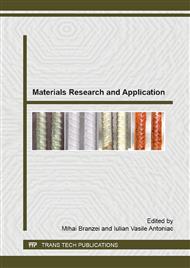p.92
p.100
p.112
p.121
p.129
p.135
p.143
p.149
p.155
Design of the Main Working Tools for Non-Ferrous Alloys Processing Using Multi-Pass ECAP Technique
Abstract:
Equal-Channel Angular Pressing (ECAP) is a very interesting method for modifying microstructure in producing ultra-fine grained materials (UFG) and nanomaterials (NM). In the ECAP processing a sample is pressed through a die in which two channels of equal cross-section intersect at an angle of ϕ and an additional angle of ψ define the arc of curvature at the outer point of intersection of the two channels. ECAP is unique because significant cold work can be accomplished without reduction in the cross sectional area of the deformed workpiece. The key feature of ECAP processing is almost as a general rule the die design and manufacture as there is limited knowledge about ECAP and especially about ECAP die design, present paper offering an optimum solution to this problem, applied to multi-pass ECAP processing of an aluminum alloy. In this study a number of three ECAP dies with vertical configuration were considered, thereby combining the ease of execution with a relatively high maneuverability and posing minimum difficulties when extracting samples from the output channel. An optimum solution is also given by the present paper for designing and manufacturing the punches used for pressing the aluminum alloy through the three ECAP dies, minimizing this way the force required for plastic deformation and the power consumption and improving the ECAP process efficiency and stability.
Info:
Periodical:
Pages:
129-134
Citation:
Online since:
July 2015
Price:
Сopyright:
© 2015 Trans Tech Publications Ltd. All Rights Reserved
Share:
Citation:


